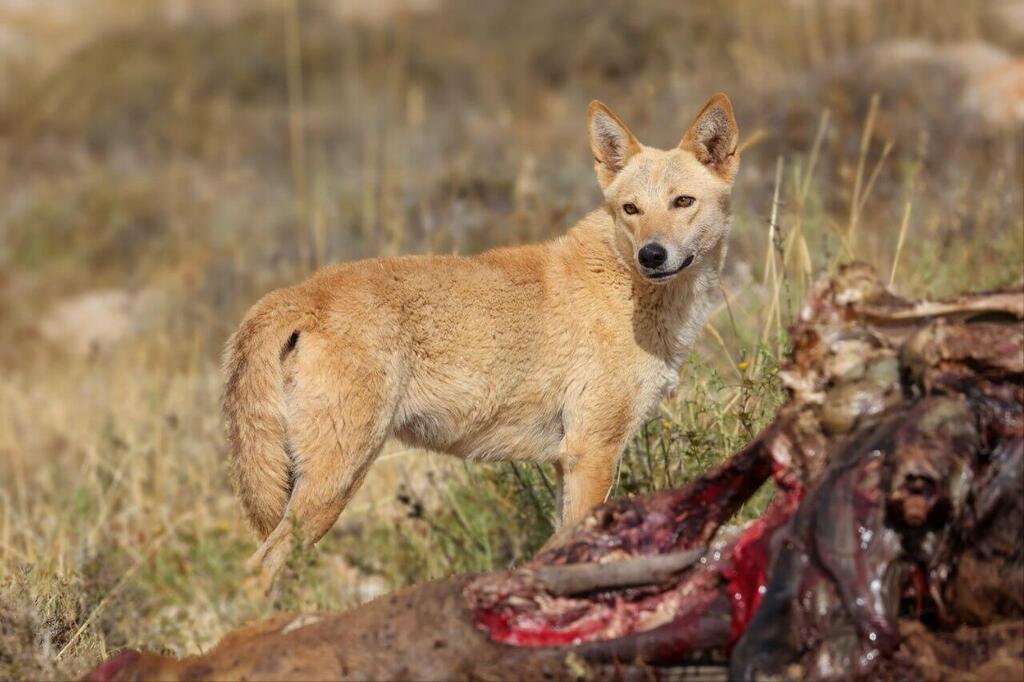Getting your Trinity Audio player ready...
Yechiam Dahan, a volunteer with the Israel Nature and Parks Authority, documented an unprecedented sight in the Yatir region of southern Israel. It all started with the carcass of a camel, which had become a feeding ground for local wildlife, leading to the extraordinary wildlife sighting of a wolf with unusual coloring.
"For several days, I observed the wildlife feasting on the carcass from a nearby hideout," Dahan said. "Every day, I saw four to five jackals, two to three foxes, a hyena, and one striking red-furred wolf."
"This isn’t just any wolf; it's a gray wolf with red fur. Such a sighting is incredibly rare in Israel," explained Dotan Rotem, an open spaces ecologist at the Israel Nature and Parks Authority. "The red color comes from the expression of genes coding for two types of melanin pigment, which are regulated by hormone secretion. Melanocytes in the skin can produce either eumelanin or pheomelanin. The rare condition here involves the production of pheomelanin, which creates a spectrum of colors from yellow to red. The more pheomelanin, the redder the fur."
Rotem further noted that studies indicate humans exhibit more of these colors in northern regions due to the lower levels of radiation, which gives an advantage to light skin or hair in absorbing essential sunlight for the production of various vitamins, including vitamin D. In North American wolves, unusual pigmentation has been linked to gene infiltration from mating with dogs.
According to reports in the Israel Nature and Parks Authority's systems, a red-furred wolf has never been documented in the southern part of the country or in the Judea and Samaria region. Gray wolves inhabit both the northern and southern regions of Israel, with an estimated population of around 400. Alon Reichman, a wolf researcher with the authority, added, "Red-furred wolves have been observed in the north. It's unclear whether these genes infiltrated from dogs or if such wolves have always existed."




